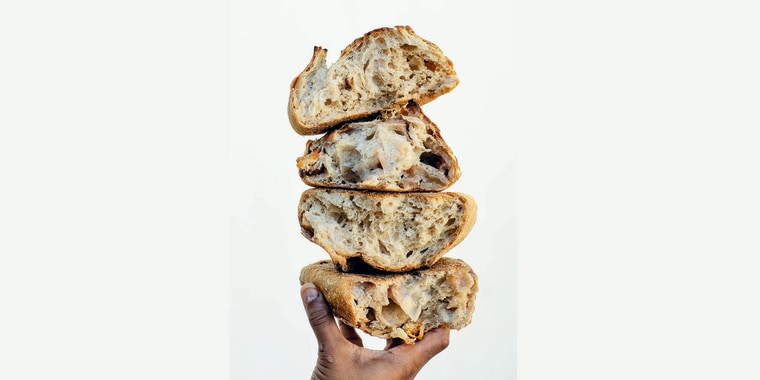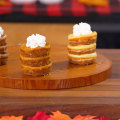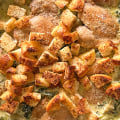Chef notes
Rustico, or "rustic" in English, is the word I like to use to describe the baseline sourdough bread that is the starting point for understanding how to bake with a sourdough starter. Why? Because it is a process that uses just three ingredients and yields today's quintessential perception of sourdough — a crunchy, toasty, rustic loaf with a blistery dark exterior and a creamy, fluffy interior. There is something about having fresh, rustic bread in your kitchen that can't be compared with anything else. It doesn't matter what meal you are preparing to eat, fresh bread will always have a place at the table. It is the purest form of making a delicious loaf of bread. All you need to do is create a sourdough starter, understand when to use it and grab your three ingredients.
Ingredients
- 50 grams mature sourdough starter
- 50 grams bread flour
- 50 grams whole-wheat flour
- 100 grams warm water
- 600 grams bread flour
- 100 grams whole-wheat flour
- 300 grams all-purpose flour
- 730 grams water
- 200 grams levain (recipe above)
- 20 grams salt
- oil, for preparing the bowl
Preparation
To build the levain:
1.In a tall jar or medium bowl, mix the mature starter, flours and warm water until incorporated.
2.Cover with a lid or clean kitchen towel and leave in a warm place for 3-4 hours, or until doubled in size.
3.You can use your levain immediately or refrigerate it for 12 hours to use at a later time, or the next day.
To make the final dough mix:
1.In a large bowl, combine the final dough ingredients.
2.Transfer the dough to a clean bowl or tub coated with a little oil. Cover the dough and let rest at room temperature for 30 minutes.
3.You will want to build strength into the dough by pulling it up and folding it over in the middle of the bowl, from each side of the bowl. It is best to do this with wet hands. Cover the dough and let rest for 30 minutes more.
4.Repeat step 3 one more time. Make sure you are not tearing the dough as you pull it up and fold it over into the middle.
5.Cover the dough and let it ferment at room temperature for 4 hours.
To shape and proof the dough:
1.Flour a work surface. Place the dough on it, divide it in half and shape each piece using a tension roll.
2.Transfer the dough to proofing baskets or bowls and let sit for about 30 minutes.
3.Cover each with a plastic bag and refrigerate overnight (8-12 hours).
To bake the bread:
1.Place the baking vessel (you can bake these in cast iron pans, on pizza stones and even on a sheet pan) in the oven and preheat the oven to 500 degrees.
2.Transfer the bread to the baking vessel and bake the bread for 10 minutes. Reduce the oven temperature to 475 degrees and bake the bread for 15 minutes more.
3.Let the steam out. Transfer your bread to the top rack for 20 minutes. I like to bake dark, so sometimes I go a little longer. I finish my bake with the oven door open to let all the moisture out.
4.They say to let your bread cool, but I say dig in. Warm bread with butter is the best.




